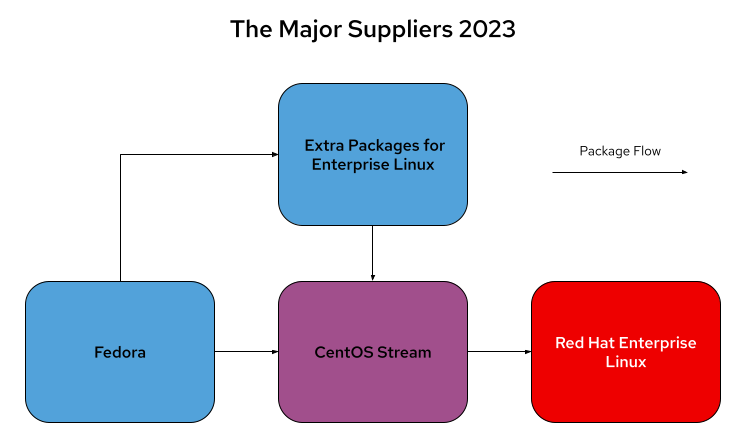Let’s dig into these three concepts a bit deeper: Portability Since the OCI standard governs the images specification, a container image can be created with Podman, pushed to almost any container registry, shared with the world, and consumed by almost any container engine including Docker, RKT, CRI-O, containerd and, of course, other Podman instances. Standardizing
Search Results for: compatibility
The Limits of Compatibility and Supportability with Containers
Many folks who do container development have run Alpine container images. You might have run Fedora, Red Hat Enterprise Linux (RHEL), CentOS, Debian, and Ubuntu images as well. If you are adventurous, you may have even run Arch, Gentoo, or dare I say, really old container images – like, RHEL 5 old. If you have some
Continue Reading “The Limits of Compatibility and Supportability with Containers”
Engineering Compatibility with The Red Hat Universal Base Image
The Red Hat Universal Base Image (UBI) has an end user license agreement which allows partners, customers and community members to deploy it anywhere, but it takes a lot more than a license to create a container base image that’s suitable for your enterprise applications. In part, suitability for enterprise deployments comes from the compatibility guarantees of
Continue Reading “Engineering Compatibility with The Red Hat Universal Base Image”
Why Portability is Not the Same Thing as Compatibility

The Container Host *is* the Container Engine, and Container Image Compatibility Matters Have you ever wondered, how are containers are so portable? How it’s possible to run Ubuntu containers on CentOS, or Fedora containers on CoreOS? How is it that all of this just magically works? As long as I run the docker daemon on
Continue Reading “Why Portability is Not the Same Thing as Compatibility”
Developing a Healthy Community in CentOS Stream

A little less than three years ago, Red Hat shifted focus in the CentOS project, from the downstream rebuild to the upstream called CentOS Stream. I wrote a heartfelt response to try and explain it better: Before You Get Mad About The CentOS Stream Change, Think About… That article seemed to help dispel some of
Continue Reading “Developing a Healthy Community in CentOS Stream”
The State of Enterprise Linux in 2023

Introduction Are you a professional Linux Systems Administrator, Architect, or Site Reliability Engineer? Do you use Fedora, Red Hat Enterprise Linux (RHEL) or a derivative in the course of your work? Do you find it difficult to keep up with all of the changes that have been going on with RHEL in the last few
Before You Get Mad About The CentOS Stream Change, Think About…

Update January 3rd, 2022: Please see: The State of Enterprise Linux in 2022 Change is hard. Explaining that change in a way that makes sense is hard. Not getting frustrated when someone is explaining change to you, or while explaining it is hard. We are all human, so please be patient. But, before you
Continue Reading “Before You Get Mad About The CentOS Stream Change, Think About…”
A Comparison of Linux Container Images

Updated 06/02/2020 Understanding Container Images To fully understand how to compare container base images, we must understand the bits inside of them. There are two major parts of an operating system – the kernel and the user space. The kernel is a special program executed directly on the hardware or virtual machine – it
Everything You Need to Know About Red Hat Universal Base Image
This is a links article that I plan on keeping up to date over the coming months as we create more and more content on Red Hat Universal Base Image. This should be a one stop shop for understanding how to use it. What/Why Introducing the Red Hat Universal Base Image (UBI) – Scott McCarty
Continue Reading “Everything You Need to Know About Red Hat Universal Base Image”
Competition Heats Up Between CRI-O and containerd – Actually, That’s Not a Thing…

Are you looking at CRI-O vs. contianerd and wondering to yourself, which one should I use? If you are…. DON’T – that’s not actually something you should be thinking about. Here’s why…. When it comes to containers there are a ton of APIs in the ecosystem. Different users, community projects and commercial products have made
Continue Reading “Competition Heats Up Between CRI-O and containerd – Actually, That’s Not a Thing…”